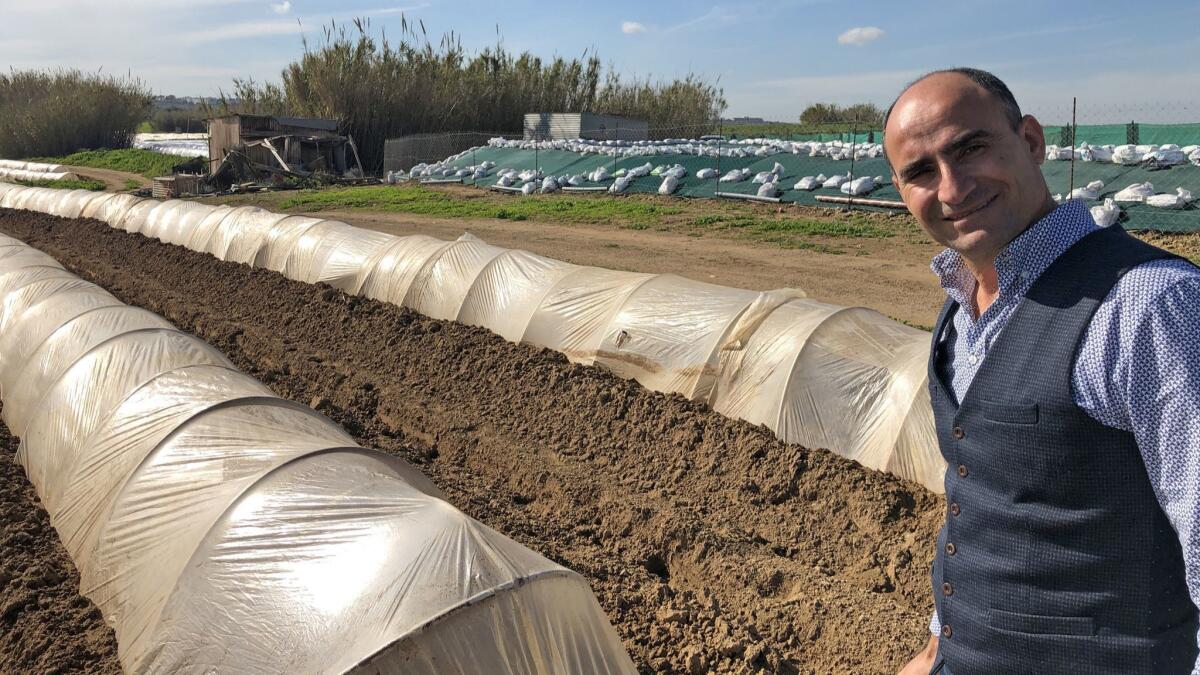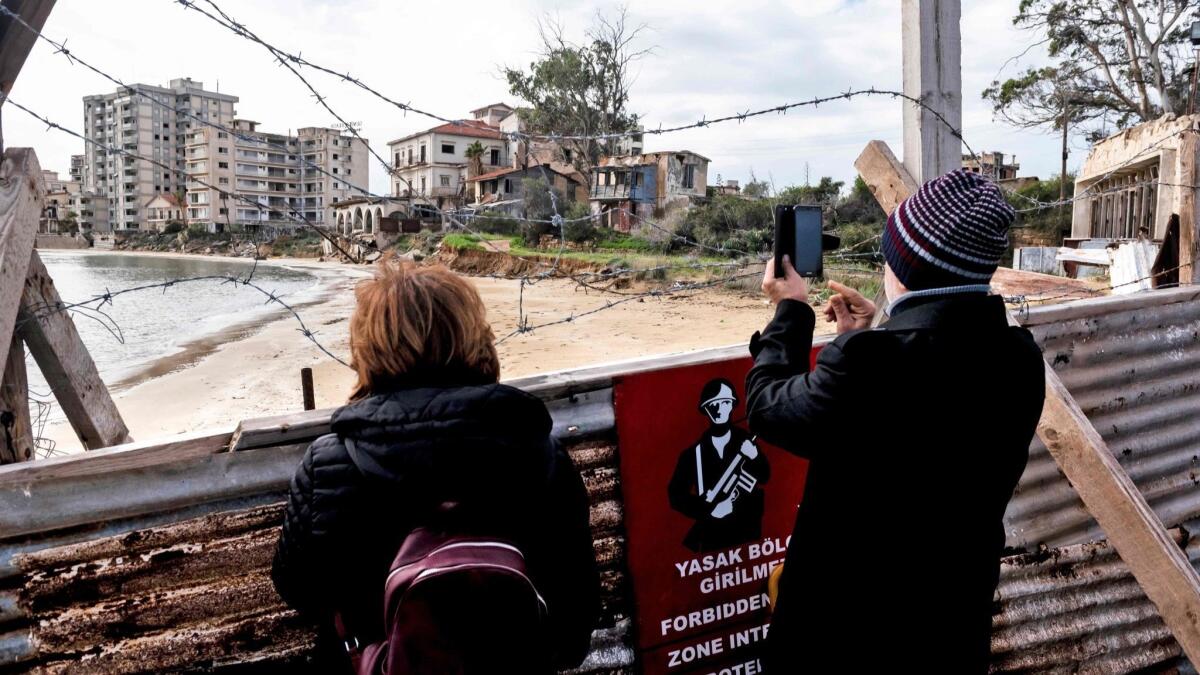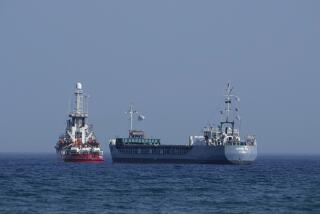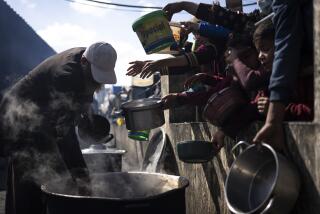Farmers in Cyprus find common ground on an island country torn in two

- Share via
Reporting from U.N. Buffer Zone, Cyprus — For the last five decades, the rich red soil in Cyprus’ eerily silent demilitarized zone here has created a hospitable habitat for plants and animals found nowhere else on this divided eastern Mediterranean island.
And in recent years, farmers from both sides of the U.N.-policed buffer zone — the Greek-speaking Republic of Cyprus and the breakaway Turkish Republic of Northern Cyprus — have added organic tomatoes, cucumbers, artichokes and other crops to the flourishing flora and fauna of the 112-mile-long no-man’s land.
Many of these farmers, along with the mayor of the Greek Cypriot town of Deryneia, are now hoping that their efforts might sow the seeds for the eventual reunification of this beautiful 1.2-million person island.
“Through farming and cultivation of this land, we can bring people together,” said Andros Karayiannis, mayor of the town of 8,000 that lies on the eastern edge of Cyprus — just south of the U.N. partition zone, or Green Line, that has separated the two sides since 1974.
“It doesn’t matter if there are Greek Cypriots out here farming the land on the south side or the Turkish Cypriots farming the land over there,” said Karayiannis who has actively encouraged residents to cultivate plots of land made arable again with the removal of 27,000 landmines across the buffer zone between 2004 and 2011. “Before 1974, we farmed this land on both sides together. And one day we’ll hopefully farm it together again.”
These days, it’s not easy to find ordinary folks on either side of the border who oppose further rapprochement. International ostracism in the north creates a range of problems, including depressed economic output and wages, leaving it feeling impoverished compared with the south. Greek-speaking Cypriots, meanwhile, long to travel to the north without cumbersome and time-consuming border controls.
That’s a far cry from the early 1960s, when the United Nations Peacekeeping Force in Cyprus (UNIFCYP) was established to cope with deep-seated hostilities between the Greek Cypriot majority and the Turkish Cypriot minority. In 1974, Turkey invaded Cyprus, capturing the northern third of the island. The internationally recognized Republic of Cyprus is a member of the European Union, while the Turkish Republic of Northern Cyprus is recognized only by Turkey.
Thousands were lost in the 1974 fighting, and the lasting scars have exacerbated tensions between Greece and Turkey. Over the years, hopes of reunification have waxed and waned on both sides of the border.
Karayiannis enjoys taking visitors to the buffer zone and sounds encouraged by even the small steps toward peace, including the farming, the opening of additional border crossings and an increased flow of tourists.
“This is completely different than the division between North and South Korea or [in the past] East and West Germany,” he said. “This is nothing like either of those.”
Aleem Siddique, a spokesman for the U.N. peacekeeping force in Cyprus, calls the buffer zone “a unique environment” where efforts to get along are now being made by both sides.
“Because it’s stood in isolation, the fauna and flora have flourished. You’ll see species of plants and animals that you won’t see anywhere else on the island. There’s been a boom in farming as these previously unproductive lands are being put to use for planting crops. It’s a steppingstone toward seeing this island reunited once again.”
Blue-helmeted U.N. peacekeepers are a common sight throughout the buffer zone, patrolling the dusty, dirty and bumpy lanes in white pickup trucks. They keep a close watch on anyone passing the barbed wire to enter the swath of land, which is as wide as 4.6 miles in some parts but as narrow as 11 feet in the capital city of Nicosia. Heavily fortified Greek Cypriot and Turkish Cypriot military bases sit just outside the no-man’s land.

There are also ominous reminders of the 1974 fighting everywhere. Turkish forces have kept sealed off the beach resort of Varosha, a once-thriving suburb of Famagusta, whose 45,000 residents fled during the Turkish invasion. A ghost town ever since, Varosha’s abandoned beachfront high-rise hotels and thousands of windowless buildings serve as an eyesore and open wound for Greek Cypriots.
The improbable renaissance of organic farming in the last decade near towns like Deryneia has done more than nourish reunification hopes. The bountiful harvests of fruits and vegetables grown in the midst of the otherwise quiet DMZ has provided hundreds of Greek and Turkish Cypriots an important source of income — and dreams for a brighter future on an island where unemployment runs higher than in most other European nations.
Karayiannis, the Deryneia mayor, said industrious farmers in his town can earn $500 to $1,200 a week selling fruit and vegetables at local farmers markets. Many unemployed or underemployed Cypriots have returned to the lands their ancestors once worked.
“We’re farmers because we love what we’re doing,” said Sotiris Marinu, 43, who grows organic strawberries, tomatoes and cucumbers in the buffer zone. He used to be an electrical engineer who gave up that career to become a farmer — like his grandfather, who long ago tended crops here.
“This isn’t a job where you can make a lot of money,” he said. “I could probably earn more as an engineer in another country. But I’m a lot happier here.”
Marinu said that the balmy climate just a few hundred yards from the Mediterranean have proven ideal for his strawberry and tomatoes.They grow year-round, he said proudly, with the help of micro-organics to combat spiders, other insects and fungus.
“It’s more work, but it’s worth it,” he said. “I hope one day a door is opened for a solution to the problem so that everyone can move back and forth freely without borders. If you look at the tomatoes, they grow everywhere. They don’t know where the border is. That’s the way it should be for everyone.”
Kirschbaum is a special correspondent.
More to Read
Sign up for Essential California
The most important California stories and recommendations in your inbox every morning.
You may occasionally receive promotional content from the Los Angeles Times.













